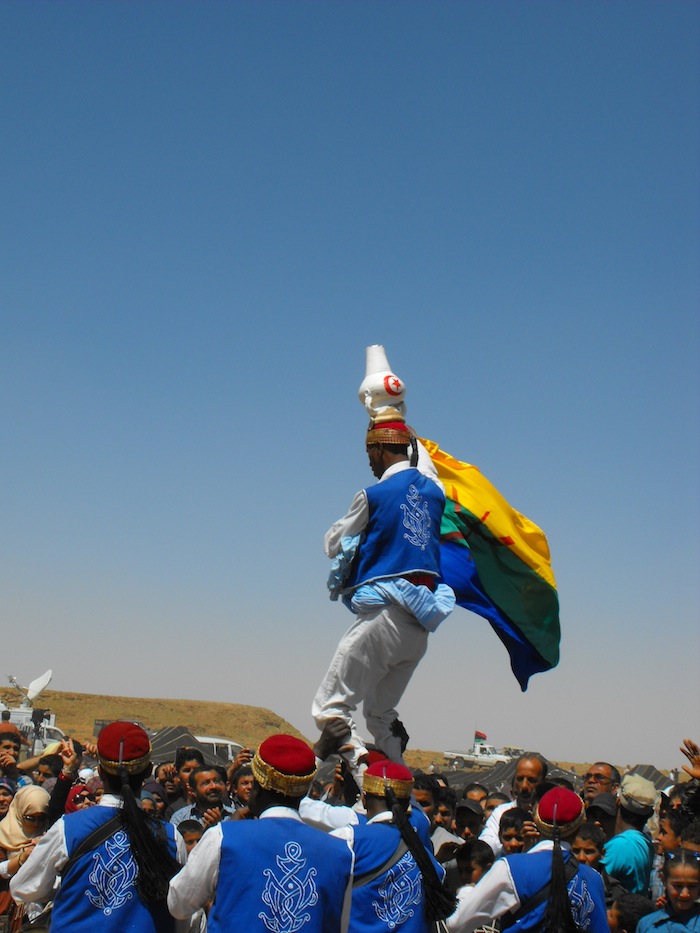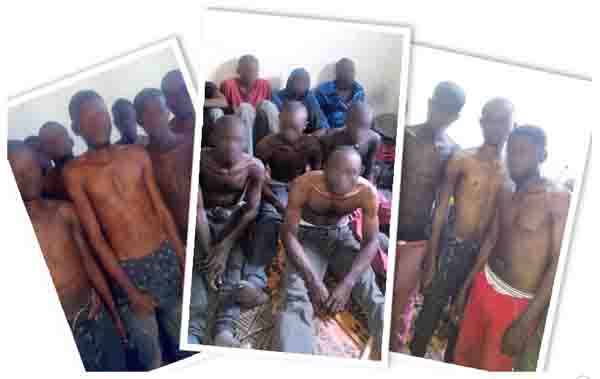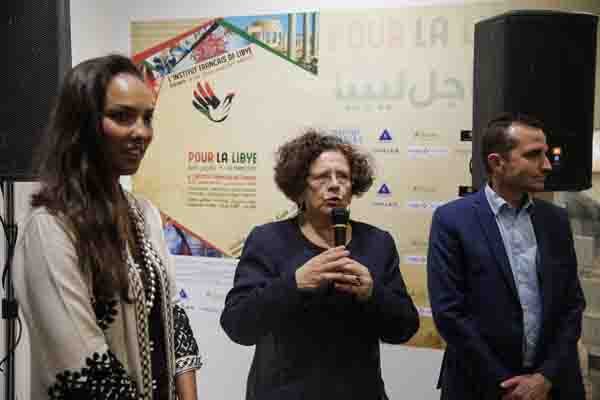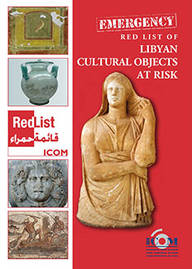By Rhiannon Smith.
Nalut, 9 April 2012:
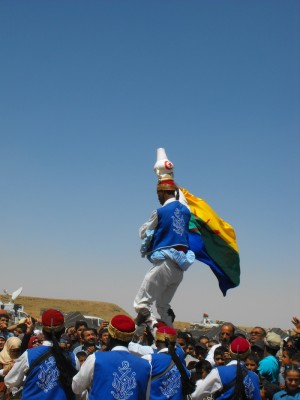
Libya’s International Tafsout Festival of Amazigh Culture took place April 4-6 in the picturesque mountain town . . .[restrict]of Nalut, high in the Nafusa Mountains towards the Tunisian border. The event was well-publicised and, over the three-day festival, the sleepy cliff-top town was flooded with tourists from neighbouring towns, from Tripoli and Tunisia, as well as a few from farther afield. Nalut has only one hotel which was closed for maintenance so for those wishing to stay a few nights, the best option was to find an apartment to rent.
Hoping to learn more about Amazigh (Berber) culture — until recently suppressed and marginalised in Libya — as well as wanting to see something of the now famous Nafusa mountain region, a couple of friends and I left Tripoli for the weekend. We were expecting some history, a bit of culture and mountain scenery. What we experienced, however, went far beyond these expectations and left us with the distinct impression that finding another place as welcoming, hospitable and beautiful as Nalut would be difficult in any country, let alone in Libya.
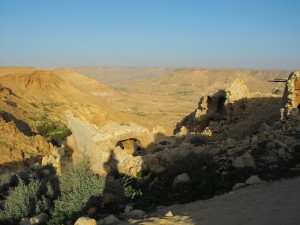
There are two roads to Nalut, the shorter, more direct route across the plains, and the longer scenic route winding up and across the mountains. As most Libyans living in Tripoli have little reason to stray far from the Libyan capital, and road maps and street names do not really exist, the process of getting to Nalut involved going southwest out of Tripoli and hoping for a road sign to point us in the right direction. The one we found took us on the long route over the mountains, but the sights along the way made it well worth the extra hour or two.
For those of you who think Libya is just dust and sand from desert to sea, take a trip to the Nafusa Mountains in spring. As the road took us through the now peaceful towns of Ghariyan, Zintan and Jadu, places made famous by their roles in the Libyan Revolution, we passed through rolling hills covered in green grass, delicate purple and yellow flowers, and fields of green wheat and olive trees. If you did not know about the battles that took place here over the last year, about the blood that was spilled here, then there is very little that would suggest that some of the revolution’s fiercest fighting took place on this very soil.
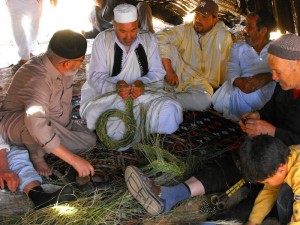
We weren’t really sure what to expect when we arrived in Nalut. We had arranged a place to stay through a friend of a friend of a friend and had no idea what the arrangements were or what the cost would be. We were met by two men, Mohamed, an older man wearing traditional Libyan clothing, and Omar, an Amazigh man in his forties dressed in military clothing. It turned out that Omar had moved himself and his family out of their own fully-furnished, fully-stocked house so we could stay there instead, and he refused to take any money for it. We stayed for two nights and over the course of those two days, these two men, as well as many others, showed us the utmost hospitality, friendliness and respect.
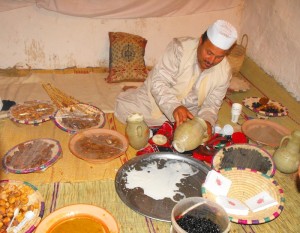
They brought us fresh bread in the mornings, cooked meals for lunch, and barbequed meat for us in the evenings. They took us to all of the festival’s sights and performances and even drove us to some little-known natural sights in the area. It seemed as though such astounding generosity was completely natural to them. They never seemed put upon, never asked for anything in return and seemed genuinely surprised that we felt we should pay them back somehow. They were complete strangers, yet they treated us like old friends or family. They didn’t even want details about who we were, what we did or why we were there. It was enough that we were strangers in their town wanting to enjoy the festival, so they did everything they could to make our stay comfortable and enjoyable.
There was plenty to see and do at the Spring festival and all of it was free of charge. There was an underground museum, with displays spread across two extensive troglodyte houses. There were fossils and bones excavated from the area, displays of traditional techniques such as wool spinning, weaving and hunting and examples of the Amazigh alphabet and script. There was traditional food on offer such as dried figs, ‘bsisa’ and soured milk, artwork and photography on display and even some local animal species to see including gazelles, snakes and lizards. Many of the rooms were decorated as they would have been in years past and there were plenty of volunteers on hand to explain more about Amazigh culture, tradition and art.
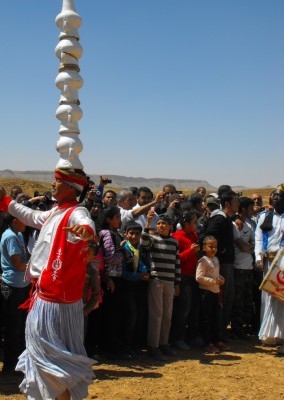
On Thursday evening various bands, including the White Birds, a Libyan rapper and many others, performed to a mixed audience long into the night on a stage carved out of the mountain below the town, next to a huge ‘Z’ sculpture which was unveiled for the festival. Friday morning saw celebrations in nearby Tikwit, where traditional tents had been set up complete with women making ‘bsisa’ and yogurt, men weaving grass baskets and colourfully dressed entertainers performing traditional dances. One such dance involved an old man dancing with eleven ceramic pots stacked on top of his head, while others played drums around him.
Everywhere the blue, yellow and green flag of the Amazigh people could be seen side by side with the new Libyan flag, whether it was waving from car windows, painted on shop fronts or draped from buildings. When speaking to the festival organisers, the overwhelming feeling was one of relief, satisfaction and pride that the Amazigh language, history and culture can now be openly celebrated and appreciated in Libya.
As well as the festival attractions, Nalut’s old city, perched on top of a cliff with stunning views across the plains towards the sea, was well worth a visit. Nalut even has its very own dinosaur museum displaying various fossilised dinosaur bones found in the region. The mountains around the town also offer up their own surprises. A 20-minute descent down a rocky track out of Nalut leads you to a hidden oasis of palm trees where a small stream has cut a cave into the mountainside. Once you have manoeuvred around the stalactites, trees and pools of water, you will find yourself in a cool, concealed cave with panoramic views across the mountains.
Nalut certainly made an impression. I have genuinely never felt so welcome in any place I have visited. If it hadn’t been for the telltale bullet holes which can still be seen in some buildings, the abandoned tanks and the martyrs’ photos which can be seen around the town, it would be near impossible to imagine that this town had recently experienced war. This festival and the town that hosted it showcased the best of Libyan culture — hospitality, friendliness and generosity and all of it in beautiful natural surroundings.
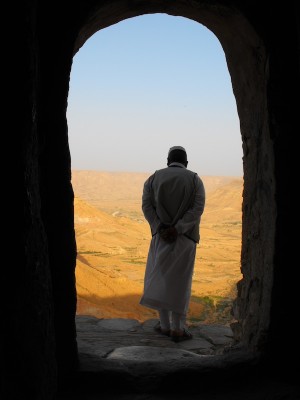
If you have never been to Libya, or are in Libya but have been too nervous to venture outside the major cities, or just haven’t found the time, then I challenge you to do so. Just a few hours in a town such as Nalut will be enough to erase forever the image of bleak landscapes, hostile locals and war-torn destruction that many now wrongly associate with Libya.
Tweet
[/restrict]
